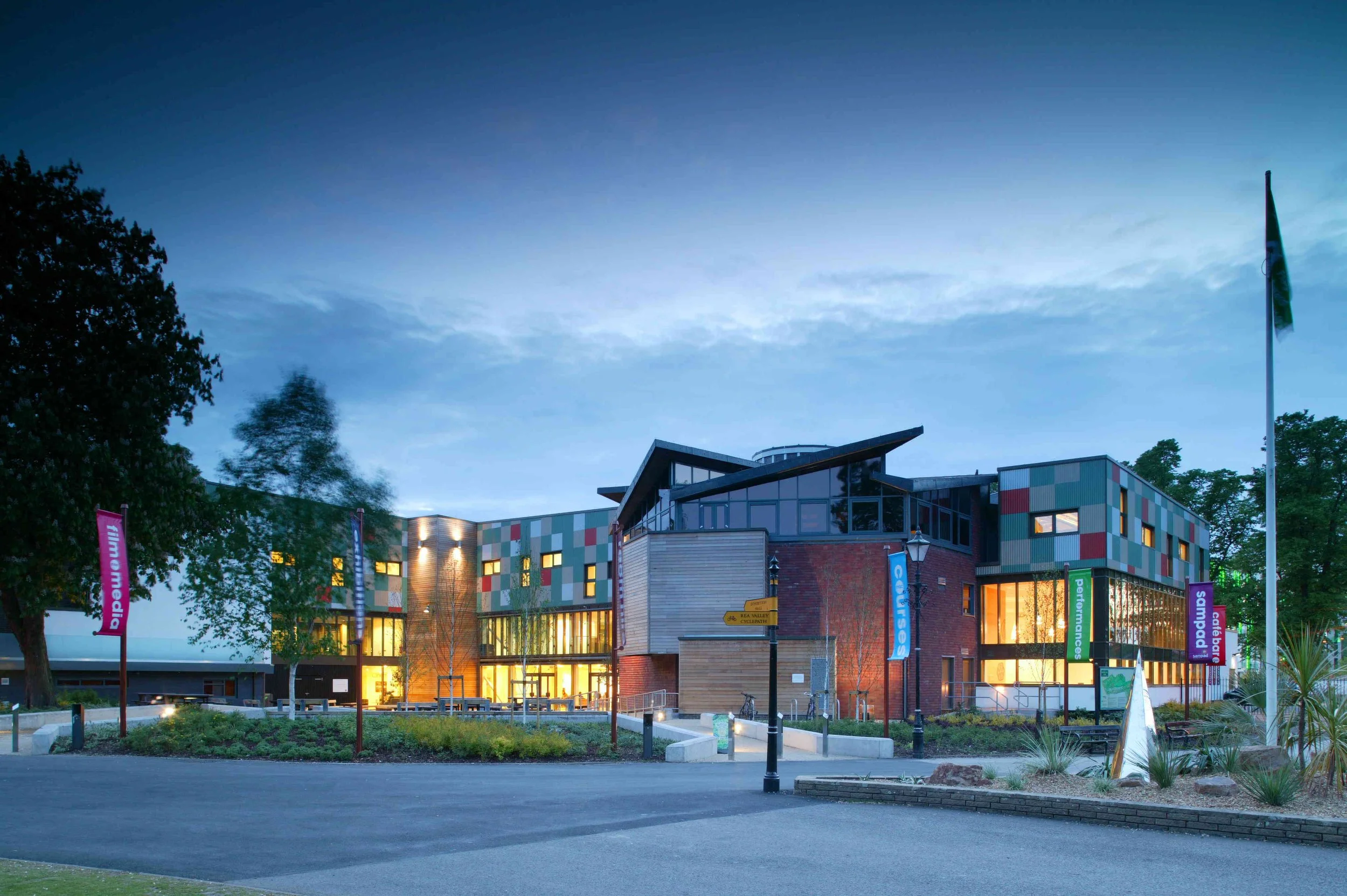Redefining the art space: Midlands Arts Centre
MAC, c. Chetwoods Architects
Raphael Roy Taylor
Amid a sense of disconnection from more traditional art spaces, particularly in the UK, it’s difficult to pinpoint why they have failed to draw in audiences to the extent of before the pandemic.
For me, the diagnosis is threefold: a sense of fatigue with contemporary art (Tate Modern has had a far greater downturn than the National Gallery or British Museum), a certain veneer of exclusivity still associated with galleries, and the failure to reimagine how we interact with art in the digital age. A few weeks ago, I had the chance to speak to Deborah Kermode, CEO & Artistic Director of Midlands Arts Centre (MAC), who outlined a very different idea of an arts venue from what one might assume.
A singular distinction is that MAC is not simply a destination to experience art, but a place of creation. With a vast array of studios for ‘dance, ceramics, jewellery-making and textiles’ courses, there is a deliberate idea at play: people who come to MAC enter as visitors and often emerge as creatives. It’s so rare to have a space to encounter art visually in a gallery space and then literally engage with the creative process, discovering or rediscovering a particular craft. Combining the production and display of art (through the Made at MAC gallery) removes that separation between the creation and display of art- they become side-by-side.
Galleries far larger than MAC are experimenting with reintroducing late openings to drive greater engagement and boost their visitor numbers. Often this is combined with special events involving music, speakers or performance, such as the Lives at Modern Art Oxford and Tate Modern’s Lates. Yet these are either one or two nights a week, or more sporadically, where MAC’s extended hours of 9 am- 11 pm means that it’s consistently accessible to the widest audience possible. The programme of films, theatre and performance increases dwell times, through which the venue becomes a ‘land of engagement’. The visitor might come in for a specific reason, such as an exhibition, course or film, but then might drift and discover different elements- theatre, performance, or the renovated café and bar, creating a ‘personalised, tailored offer’ different to the more ‘austere national venue’.
This stems from a deep understanding of the audience, not just nationally (the venue has almost a million yearly visits), but in the locality. Birmingham’s large South Asian community particularly interests Kermode, and MAC has responded to the underrepresentation of this community not just with events such as the celebrations of Eid and Diwali but through exhibitions with a real purpose. The current exhibition, Sari Stories, an open call across the Midlands, shares the significance of this material, passed down through generations but not widely understood.
MAC’s location is very different from other institutions: separated from the urban chaos of city centres, sitting at the heart of Cannon Hill Park it means ‘everything is that bit more chilled’. People don’t arrive stressed from driving or taking the train through city centres, and can relax in nature or play with children, removing that often oppressive feeling I remember as a child of being stuck too long in an art gallery, but with nowhere to escape.
As galleries reckon with new audiences with greater demands than the traditional art gallery, MAC stands out as an example of how to engage, foster creativity and ensure audiences return, giving them experiences far removed from what they might expect. It feels almost generations ahead of other institutions, despite their often far greater resources.

